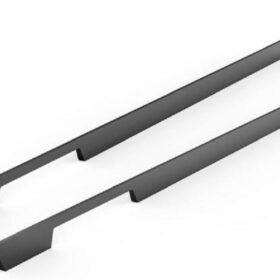Best Practices for Selecting Aluminium Alloy Handles
Best Practices for Selecting Aluminium Alloy Handles: Unlocking Strength, Durability, and Aesthetics
In the realm of design and engineering, aluminium alloy handles reign supreme for their unparalleled combination of strength, durability, and visual appeal. Selecting the right alloy for your specific application is crucial to ensure optimal performance and longevity. Here are some essential best practices to guide your decision-making:
1. Identify Your Performance Needs:
Understand the intended use of the handles and the loads they will be subjected to. Consider factors such as weight, frequency of use, and operating environment. Different alloys exhibit varying strengths and fatigue resistance, so it’s essential to align your choice with the anticipated demands.
2. Explore Alloy Options:
The wide range of aluminium alloys available offers a spectrum of properties. For high-strength and corrosion resistance, consider alloys such as 6061 or 7075. For a lightweight and durable option, alloys like 5052 or 5083 may be suitable.
3. Consider Surface Treatments:
Surface treatments play a pivotal role in enhancing durability and aesthetics. Anodizing, powder coating, and plating can improve corrosion resistance, abrasion resistance, and color customization. Choose a treatment that aligns with your desired appearance and performance criteria.
4. Focus on Design and Ergonomics:
Handles should not only be functional but also comfortable and safe to use. Consider the shape, size, and texture of the handles to ensure they fit comfortably in the hand and provide a secure grip.
5. Evaluate Manufacturing Processes:
The manufacturing process can influence the quality and cost of the handles. Consider factors such as casting, forging, or extrusion. Each process has its advantages and limitations, so it’s important to align the manufacturing technique with your design and budget constraints.
6. Consult Industry Standards:
Adhering to industry standards ensures that the handles meet specific quality and performance requirements. Seek handles that comply with relevant standards, such as ANSI, DIN, or ISO, to ensure reliability and conformance.
7. Look for Certification and Testing:
Reputable manufacturers provide certification and testing documentation to demonstrate the quality and performance of their products. This documentation verifies that the handles meet the claimed specifications and are safe for their intended use.
By following these best practices, you can confidently select aluminium alloy handles that meet the demands of your application with unwavering strength, durability, and aesthetic appeal. Unlock the boundless potential of these versatile materials and elevate your designs to new heights.
-
2024-11-29Top Trends in Modern Kitchen Cabinet Pulls for 2024
-
2024-11-28The Ultimate Guide to Modern Kitchen Cabinet Pulls- Materials, Styles, and Tips
-
2024-11-27Elevate Your Kitchen Design with These Must-Have Modern Cabinet Pulls
-
2024-11-26Sleek and Stylish- The Best Modern Kitchen Cabinet Pulls for a Contemporary Look










